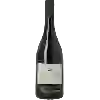
Domaine du Bel AirJour de Soif
This wine is composed of 100% of the grape variety Cabernet Franc.
In the mouth this red wine is a powerful with a nice balance between acidity and tannins.
This wine generally goes well with pork, vegetarian or poultry.
Taste structure of the Jour de Soif from the Domaine du Bel Air
Light | Bold | |
Smooth | Tannic | |
Dry | Sweet | |
Soft | Acidic |
In the mouth the Jour de Soif of Domaine du Bel Air in the region of Loire Valley is a powerful with a nice balance between acidity and tannins.
Wine flavors and olphactive analysis
On the nose the Jour de Soif of Domaine du Bel Air in the region of Loire Valley often reveals types of flavors of cherry, oaky or smoke and sometimes also flavors of earthy, blackberry or minerality.
Food and wine pairings with Jour de Soif
Pairings that work perfectly with Jour de Soif
Original food and wine pairings with Jour de Soif
The Jour de Soif of Domaine du Bel Air matches generally quite well with dishes of lamb, vegetarian or poultry such as recipes of thomas's shoulder of lamb, goat cheese and bacon quiche or cheeseburger.
Details and technical informations about Domaine du Bel Air's Jour de Soif.
Discover the grape variety: Cabernet franc
Cabernet Franc is one of the oldest red grape varieties in Bordeaux. The Libourne region is its terroir where it develops best. The terroirs of Saint-Emilion and Fronsac allow it to mature and develop its best range of aromas. It is also the majority in many blends. The very famous Château Cheval Blanc, for example, uses 60% Cabernet Franc. The wines produced with Cabernet Franc are medium in colour with fine tannins and subtle aromas of small red fruits and spices. When blended with Merlot and Cabernet Sauvignon, it brings complexity and a bouquet of aromas to the wine. It produces fruity wines that can be drunk quite quickly, but whose great vintages can be kept for a long time. It is an earlier grape variety than Cabernet Sauvignon, which means that it is planted as far north as the Loire Valley. In Anjou, it is also used to make sweet rosé wines. Cabernet Franc is now used in some twenty countries in Europe and throughout the world.
Last vintages of this wine
The best vintages of Jour de Soif from Domaine du Bel Air are 2023, 2022, 2021, 2020 and 2019.
Informations about the Domaine du Bel Air
The Domaine du Bel Air is one of of the world's greatest estates. It offers 9 wines for sale in the of Bourgueil to come and discover on site or to buy online.
The wine region of Bourgueil
The wine region of Bourgueil is located in the region of Touraine of Loire Valley of France. Wineries and vineyards like the Domaine du Bel Air or the Domaine de la Chevalerie produce mainly wines red, pink and white. The most planted grape varieties in the region of Bourgueil are Cabernet franc, Cabernet-Sauvignon and Pinot noir, they are then used in wines in blends or as a single variety. On the nose of Bourgueil often reveals types of flavors of red fruit, toasty or red currant and sometimes also flavors of cocoa, green bell pepper or tropical fruit.
The wine region of Loire Valley
The Loire Valley is a key wine region in western France. It follows the course of the Loire River on its Long journey through the heart of France, from the inland hills of the Auvergne to the plains of the French Atlantic coast near Nantes (Muscadet country). Important in terms of quantity and quality, the region produces large quantities (about 4 million h/l each year) of everyday wines, as well as some of France's greatest wines. Diversity is another of the region's major assets; the styles of wine produced here range from the light, tangy Muscadet to the Sweet, honeyed Bonnezeaux, the Sparkling whites of Vouvray and the juicy, Tannic reds of Chinon and Saumur.
The word of the wine: Casting
Preparatory phase of the wine-making process consisting in bursting the grapes in order to release the juice.














